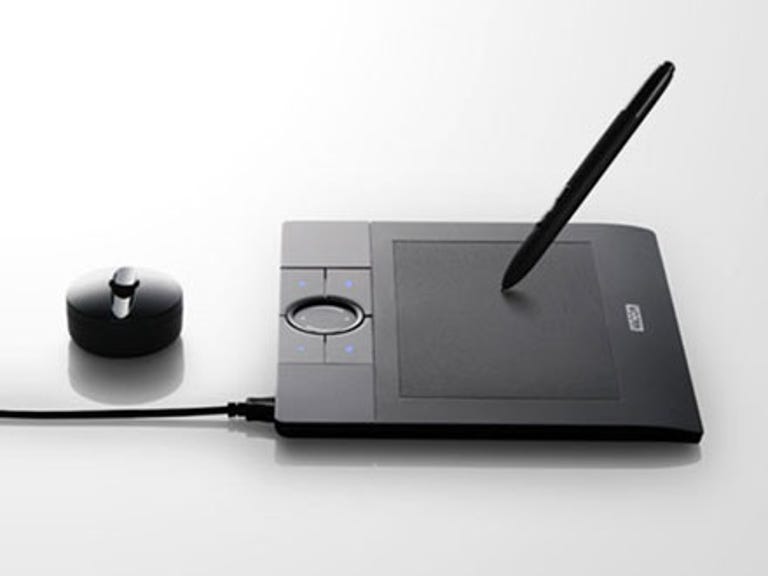 Why You Can Trust CNET
Why You Can Trust CNET Wacom Bamboo review: Wacom Bamboo
Wacom's Bamboo promises to "reinvent the pen for the 21st century". It falls somewhat short of that lofty goal, although it's a great introduction to using a graphics tablet if that's what you're after.
Design
The first thing you'll spot when you flip open the Wacom Bamboo's box isn't the tablet within -- it's a flap of paper introducing you to the Bamboo, and asking you to "Use it to get more out of your computer" in many languages. Wacom's solidly stepping out of the designer workspace -- its traditional user market for writing/drawing tablets -- and into the consumer space with the Bamboo, and it's doing so with more than a small amount of chutzpah; the official site for the Bamboo claims that it's "reinventing the pen for the 21st century".
The Good
The Bad
The Bottom Line
The Bamboo tablet is quite small by tablet standards -- 200 x 186 x 10.7 mm -- and weighs only 370 grams, making it easy enough to carry around. Wacom sell an optional Bamboo carrying case if you're a really mobile scribbler, but we can't imagine the size of the tablet being a particular inhibitor to its portability anyway; it'd fit into just about any bag.
Aside from the Bamboo tablet, you'll also find a driver CD (for Windows and Mac users), as well as a Windows-only application CD, a small stand for the stylus and a standard USB cable for connection and power.
Features
While the Bamboo tablet is quite small, it's relatively packed with features. The drawing area is clearly marked and not that large, but the top of the tablet houses four customisable program keys, surrounding a very iPod-like virtual scroll wheel, or as Wacom put it, a "Touch Ring". The exact operation of the touch ring varies depending on the application in use at the time, but most applications use it either for zooming in and out, or scrolling in the style of a wheel mouse.
While the Bamboo does work under Mac OS X, it's designed with Windows Vista in mind; the application suite provided is Windows-only, and there's a series of navigation and shortcut commands available under Vista, including the ability to use Flip3D simply by clicking on the FN2 key on the Bamboo tablet.
Performance
One of the first things you'll find odd about the Bamboo is that it detects the pen well before it touches the tablet itself -- the included tutorial suggests it's around 3mm from the surface of the tablet. As such, you can use it for mousing by waggling it around like a magic wand. Whether or not you choose to shout "Aparecium", Harry Potter-style, is entirely up to you.
Given the Bamboo's stated purpose is to enable pen-based computing, we assessed it on two fronts. Firstly, there's undoubtedly a market of people who will buy a tablet so that they can doodle -- whether they're aspiring illustrators or just graffiti aficionados. The Bamboo worked quite well for our admittedly amateur doodles, and was a great hit with a younger crowd who couldn't easily manage a mouse for drawing. Our one concern with using it as a strict drawing tablet is that the scribing area is quite small, which can make accurate lengthy pen strokes a little tricky.
Then there's the navigation aspect; the idea that the Bamboo will replace your normal computing tasks that would otherwise fall to mousing and keyboard shortcuts. It took us some time to get used to the fact that the Bamboo's tiny input area represents the entire display screen in an absolute sense. As such, you don't have to scroll to a given area -- you can just lift and point, and the cursor will appear there. The navigation buttons -- both on the Bamboo and the pen itself -- do add functionality to the user experience, and we can solidly see it being a boon for those with mobility issues who may not be able to use a mouse or keyboard. The touch ring is nicely responsive, but it's ultimately not that different to using the same kind of navigation aids built into the touchpads of many laptop PCs. Learning to effectively use the Bamboo takes quite a bit of time, and it's time that you'll be well aware could be spent navigating just as quickly in the regular mouse way. The 3mm reception gap also makes some small selection jobs quite tricky.


